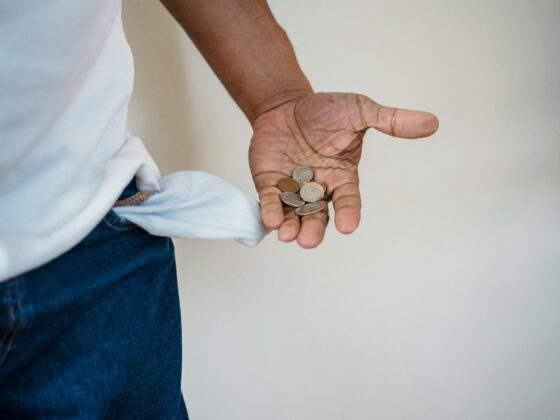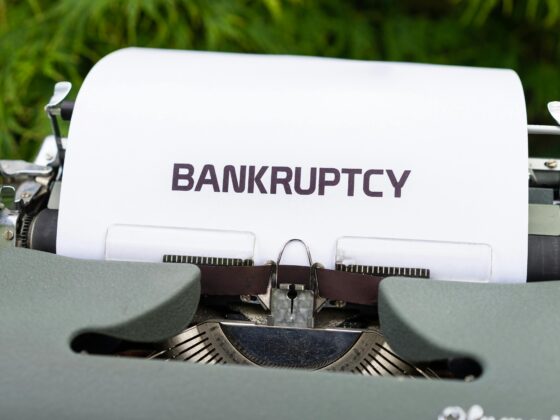What to Do When You Find Yourself in Debt: A Complete Recovery Guide

When debt overwhelms your life, it can feel like you’re drowning in financial quicksand. The sleepless nights, the constant worry, and the crushing weight of owing money can make even the strongest person feel hopeless. If you’re reading this, you’re likely facing that exact situation right now.
But here’s the truth: being in debt doesn’t define you, and it certainly doesn’t determine your future. Millions of people have successfully climbed out of debt using proven strategies and mindset shifts. This comprehensive guide will show you exactly what to do when you find yourself in debt, providing actionable steps that can transform your financial situation.
The Reality of Being in Debt: You’re Not Alone
Before diving into solutions, it’s crucial to understand that debt has become a widespread reality. Nine in 10 Americans are actively working to reduce their burden of debt in 2025, focusing on reducing spending, increasing income and managing debt more effectively. This statistic reveals that if you’re struggling with debt, you’re part of a vast majority, not an isolated case.
The psychological impact of debt extends far beyond numbers on a bank statement. It affects your sleep, relationships, career decisions, and overall well-being. However, acknowledging this reality is the first step toward breaking free from its grip.
The 5-Step Framework for Debt Recovery
Step 1: Don’t Lie – Face the Truth About Your Financial Situation
The foundation of debt recovery begins with radical honesty. This means confronting the full scope of your financial situation without sugar-coating, minimising, or hiding from the facts. Many people in debt live in denial, avoiding bank statements, ignoring bills, or providing false information to creditors.
Why honesty matters:
- Lying to yourself prevents you from creating an accurate recovery plan
- Dishonesty with creditors can lead to legal complications
- Self-deception creates additional mental stress and prevents progress
Practical steps to embrace financial honesty:
Create a complete debt inventory:
- List every single debt, no matter how small
- Include credit cards, personal loans, student loans, medical bills, and money owed to friends or family
- Document the exact balance, minimum payment, and interest rate for each debt
- Don’t round numbers down – use precise amounts
Calculate your true monthly expenses:
- Track every expenditure for at least two weeks
- Include all variable expenses like coffee, entertainment, and impulse purchases
- Compare your actual spending to what you think you spend
Assess your income realistically:
- Document all income sources
- Use after-tax, take-home amounts
- Include irregular income like freelance work or bonuses
Step 2: Take Immediate Action – Stop the Bleeding
Once you’ve faced the truth about your debt, the next step is taking immediate action to prevent the situation from worsening. This isn’t about solving everything at once; it’s about stopping the financial haemorrhaging.
Emergency debt triage:
Stop creating new debt:
- Cut up credit cards or remove them from your wallet
- Delete stored payment information from online shopping accounts
- Implement a 24-hour waiting period before any non-essential purchase
Contact creditors proactively:
- Call creditors before they call you
- Explain your situation honestly
- Ask about hardship programs or payment plans
- Get any agreements in writing
Prioritise essential expenses:
- Housing (rent/mortgage)
- Utilities
- Transportation
- Minimum debt payments
- Food and basic necessities
Address urgent debts first: One of the most effective strategies for managing debt is paying off high-interest debt first, such as credit card debt and balances. High-interest debt accumulates quickly, making it considerably more challenging to pay off in the long run.
Step 3: Ask for Help – You Don’t Have to Do This Alone
Pride often prevents people from seeking help when they’re in debt, but asking for assistance is actually a sign of wisdom and strength. There are numerous resources and support systems available to help you navigate debt recovery.
Professional help options:
Credit counselling services:
- Non-profit credit counselling agencies offer free or low-cost guidance
- They can help create debt management plans
- Look for agencies certified by the National Foundation for Credit Counseling
Financial advisors:
- Can provide comprehensive financial planning
- Help create long-term strategies beyond debt elimination
- Offer investment and savings guidance once debt is managed
Debt consolidation specialists: It is a way of consolidating all of your debts into a single loan with one monthly payment. You can do this by taking out a second mortgage or a home equity line of credit. Or, you might take out a personal debt consolidation loan from a bank or finance company.
Personal support network:
Family and friends:
- Consider asking for temporary financial assistance
- Be specific about repayment terms and timelines
- Put agreements in writing to protect relationships
Support groups:
- Join debt recovery support groups (online or in-person)
- Connect with others facing similar challenges
- Share strategies and maintain accountability
Professional network:
- Inform trusted colleagues about your situation
- Ask about additional work opportunities
- Explore mentorship possibilities
Step 4: Save 10% to 20% Now – Build Your Financial Foundation
This step often surprises people in debt. The idea of saving money when you owe money seems counterintuitive, but it’s actually one of the most crucial elements of debt recovery. Building savings while paying off debt creates financial stability and prevents future debt accumulation.
Why saving is essential during debt recovery:
Emergency buffer:
- Prevents new debt when unexpected expenses arise
- Reduces reliance on credit cards for emergencies
- Provides psychological security and confidence
Momentum building:
- Creates positive financial habits
- Demonstrates your ability to manage money
- Builds confidence in your financial capabilities
Strategic implementation:
Start with any amount:
- If 10% seems impossible, start with 1% or even $5 per month
- The habit is more important than the amount initially
- Gradually increase the percentage as your situation improves
Automate your savings:
- Set up automatic transfers to a separate savings account
- Make it happen before you can spend the money
- Treat savings like a non-negotiable bill
Use the envelope method:
- Allocate cash for different expenses in separate envelopes
- Include a “savings” envelope in your system
- Physically separate money to avoid temptation
Step 5: Retool – Develop New Skills and Income Sources
The final step in debt recovery involves “retooling” – developing new skills, income sources, and financial habits that will not only help you eliminate debt but also prevent future financial problems.
Skill development for income increase:
Identify marketable skills:
- Assess your current abilities and experience
- Research high-demand skills in your industry
- Consider skills that can be monetised quickly
Pursue additional education:
- Take online courses in relevant areas
- Attend workshops and seminars
- Earn certifications that increase your earning potential
Develop multiple income streams:
- Freelance in your area of expertise
- Start a side business
- Explore passive income opportunities
- Consider the gig economy (rideshare, delivery, etc.)
Financial habit retooling:
Create a sustainable budget: Having and maintaining a budget will help you manage both debts and expenses. When you take on debt, you are making interest payments instead of using that cash flow for other financial goals.
Implement debt payoff strategies: The debt snowball method is a debt-reduction strategy where you pay off debt in order of the smallest to largest balance, gaining momentum as you knock out each debt.
Build long-term financial literacy:
- Read financial books and articles
- Listen to personal finance podcasts
- Follow reputable financial advisors and educators
Advanced Debt Management Strategies for 2025
The Debt Avalanche Method
While the debt snowball method focuses on psychological wins by paying off the smallest balances first, the debt avalanche method prioritises mathematical efficiency:
- List all debts by interest rate (highest to lowest)
- Pay minimums on all debts
- Put extra money toward the highest-interest debt
- Once paid off, move to the next highest-interest debt
Debt Consolidation Options
Personal consolidation loans:
- Single monthly payment
- Potentially lower interest rate
- Fixed repayment timeline
Balance transfer credit cards:
- 0% introductory APR periods
- Consolidate multiple credit card balances
- Requires discipline to avoid accumulating new debt
Home equity options:
- Home equity loans or lines of credit
- Typically, lower interest rates
- Risk of losing your home if you can’t pay
Modern Technology Tools
Budgeting apps:
- Mint, YNAB, or Personal Capital for expense tracking
- Automated categorisation and alerts
- Real-time financial monitoring
Debt tracking tools:
- Apps that calculate payoff timelines
- Motivation through progress visualisation
- Reminder systems for payments
Creating Your Debt Recovery Timeline
Months 1-3: Foundation Building
- Complete honest financial assessment
- Contact all creditors
- Establish emergency fund ($500-$1000)
- Create and implement a basic budget
Months 4-12: Momentum Phase
- Increase income through side hustles
- Apply the debt snowball or avalanche method
- Build savings to $2000-$5000
- Develop sustainable financial habits
Year 2 and Beyond: Wealth Building
- Focus on the highest-yield debt elimination
- Increase retirement contributions
- Build a substantial emergency fund (3-6 months’ expenses)
- Consider investment opportunities
Common Debt Recovery Mistakes to Avoid
Mistake 1: Trying to Pay Off Everything at Once
Attempting to tackle all debts simultaneously often leads to burnout and failure. Focus on one debt at a time while maintaining minimums on others.
Mistake 2: Ignoring the Emotional Component
Debt recovery isn’t just about math; it’s about changing behaviours and mindset. Address the psychological aspects of spending and money management.
Mistake 3: Not Having a Plan for Windfalls
Commit raises, bonuses or other financial windfalls to debt reduction rather than adding these funds to your monthly spending pool. Having a plan prevents lifestyle inflation.
Mistake 4: Closing Credit Cards Too Quickly
While you should stop using credit cards, closing them can negatively impact your credit score. Keep old accounts open but unused.
Mistake 5: Not Building an Emergency Fund
Failing to save while paying off debt often leads to new debt when unexpected expenses arise.
Maintaining Motivation During Debt Recovery
Celebrate Small Wins
- Acknowledge each debt paid off
- Reward progress without spending money
- Share victories with your support network
Visualise Your Debt-Free Future
- Create a vision board of financial goals
- Write down what life will look like without debt
- Regularly review and update your “why”
Track Progress Visually
- Use debt thermometers or progress charts
- Take monthly photos of decreasing debt balances
- Create milestone celebrations
Stay Connected to Your Support System
- Regular check-ins with accountability partners
- Participate in online debt recovery communities
- Share both struggles and successes
Building Wealth After Debt Recovery
Once you’ve successfully eliminated your debt, the habits and skills you’ve developed become the foundation for building wealth:
Emergency Fund Expansion
- Build your emergency fund to 6-12 months of expenses
- Keep funds in high-yield savings accounts
- Maintain easy access without investment risk
Retirement Planning
- Maximize employer 401(k) matching
- Consider Roth IRA contributions
- Increase contributions annually
Investment Strategy
- Start with low-cost index funds
- Diversify across asset classes
- Focus on long-term growth
Continued Education
- Stay current with financial strategies
- Learn about tax optimisation
- Understand investment principles
Conclusion: Your Debt-Free Future Starts Now
Finding yourself in debt can feel like standing at the bottom of a mountain, looking up at an impossibly steep climb. But thousands of people make this journey successfully every year, and you can too. The five-step framework outlined in this guide – don’t lie, take immediate action, ask for help, save money, and retool your skills – provides a roadmap out of debt and toward financial freedom.
Remember, debt recovery isn’t just about paying off what you owe; it’s about transforming your relationship with money, developing sustainable financial habits, and building a foundation for long-term wealth. The journey requires patience, persistence, and often sacrifice, but the destination – financial freedom – is worth every effort.
Building healthy financial habits—like paying off credit card balances in full each month and saving for big expenses—can prevent you from falling into debt again. The skills you develop during debt recovery become the tools for lifelong financial success.
Your situation may feel overwhelming right now, but remember: every person who has achieved financial freedom started exactly where you are today. The only difference between where you are and where you want to be is the decision to start and the commitment to continue.
Take the first step today. Face the truth about your debt, create your plan, and begin your journey toward financial freedom. Your future self will thank you for having the courage to start.







